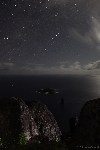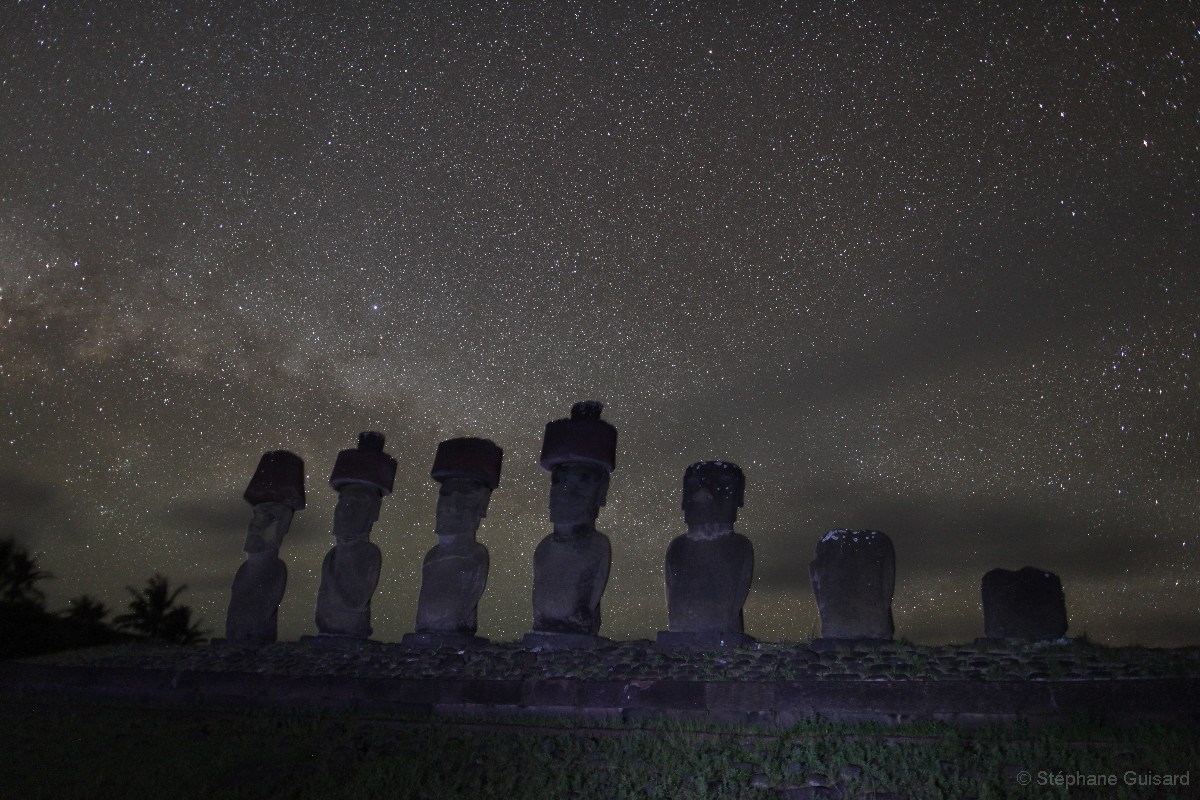HOME
Rapa Nui (Easter Island) - Anakena, Tongariki, Rano-Kau, Orongo.
A UNESCO world heritage site

©Stéphane Guisard, Los Cielos de Chile
Thanks to Easter Island people for their kindness, to Luna and her family for their welcome and to CONAF and its staff to make the work presented here possible. These images were taken with the special authorization from CONAF and the Rapa Nui National Park.
Maururu tatou nu'u Rapa Nui mo te aroha, ki a Luna he nu'u ena mo haere mai. Maururu ki a CONAF he tatou tangata mo te umanga i te anga nei.




Ahu NauNau under the Milky Way at Anakena. According to island oral traditions, Anakena was the landing place of Hotu Matu'a, a Polynesian chief who lead a two canoe settlement party here and founded the first settlement on Rapa Nui.It was later a ceremonial center where islanders read from Rongorongo boards. Anakena featured in the Tangata manu or Birdman cult as in years when the new Birdman was from the western clans, he would end his celebrations at Anakena.

Milky Way sets behind Ahu NauNau at Anakena.

Anakena beach with its palm trees and the Moais of Ahu NauNau.

Large Magellanic Cloud and Canopus above Tongariki ahu and its 15 Moais.
Ahu Tongariki, known as well as the "15 Moais" is the largest ahu on
Rapa Nui/Easter Island. Its moai were toppled during the island's
civil wars and in the twentieth century the ahu was swept inland by a
tidal wave. It has since been restored and has fifteen moai including
an 86 tonne moai that was the heaviest ever erected on the island. Ahu
Tongariki is close to Rano Raraku and Poike in the Rapa Nui National
Park.

Orion and Aldébaran rise above the Tongariki ahu Moais.

Magellanic Cloud and shooting star above Rano Kau lit by the Moonlight. Rano Kau is a 324 m (1,063 ft) tall extinct volcano that forms the southwestern headland of Easter Island. It was formed of basaltic lava flows in the Pleistocene with its youngest rocks dated at between 150,000 and 210,000 years ago. Rano Kau has a crater lake which is one of the island's only three natural bodies of fresh water. Rano Kau is in the world heritage site of Rapa Nui National Park and gives its name to one of the seven sections of the park. The principal archaeological site on Rano Kau is the ruined ceremonial village of Orongo which is located at the point where the sea cliff and inner crater wall converge.

Southern cross and Centaurus above the Birdman stone and Motu Nui islet.
Orongo is a stone village and ceremonial center at the southwestern
tip of Rapa Nui (Easter Island) On the edge of Rano Kau. Orongo is made of
53 stone masonry houses and enjoys a dramatic
location on the crater lip of Rano Kau at the point where a 250 meter
sea cliff converges with the inner wall of the crater of Rano Kau.
Orongo now has World Heritage status as part of the Rapa Nui NationalPark.
The Tangata manu (bird-man), visible on the rock in the fore ground,
was the winner of a traditional competition on Rapa Nui (Easter
Island). The ritual was an annual competition to collect the first
Sooty Tern (manu tara) egg of the season from the islet of Motu Nui
(visible on the background of the picture), swim back to Rapa Nui and
climb the sea cliff of Rano Kau to the clifftop village of Orongo.
